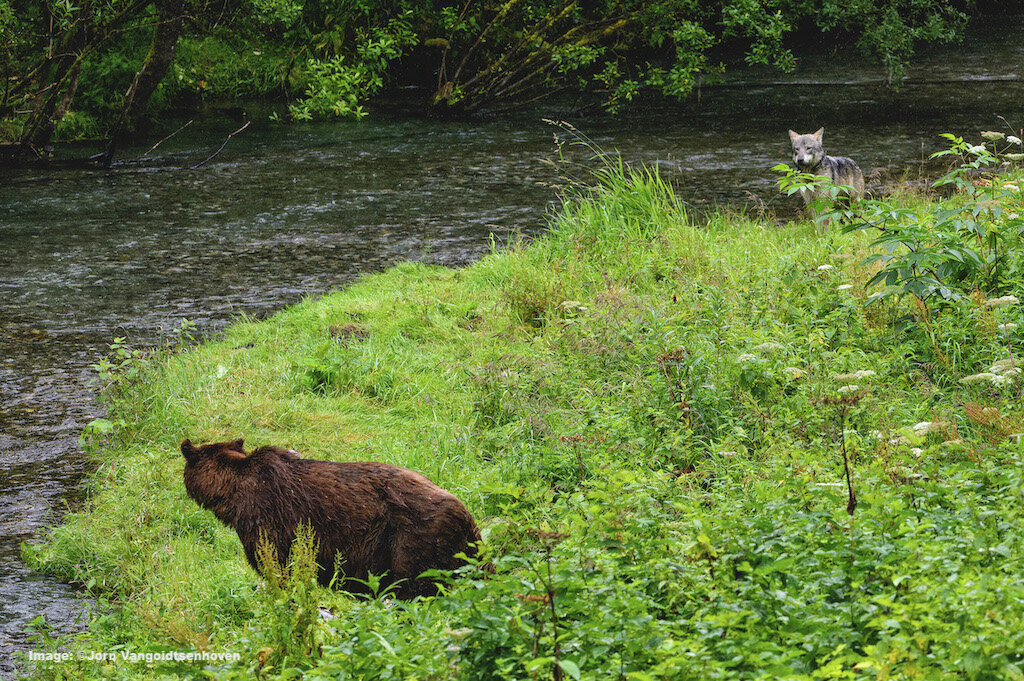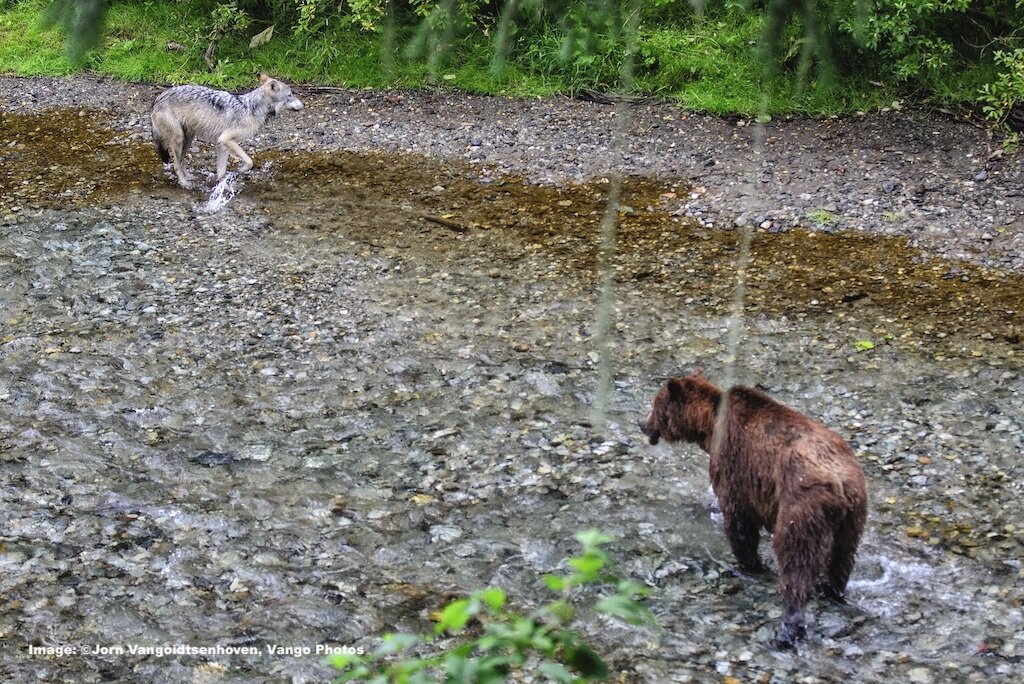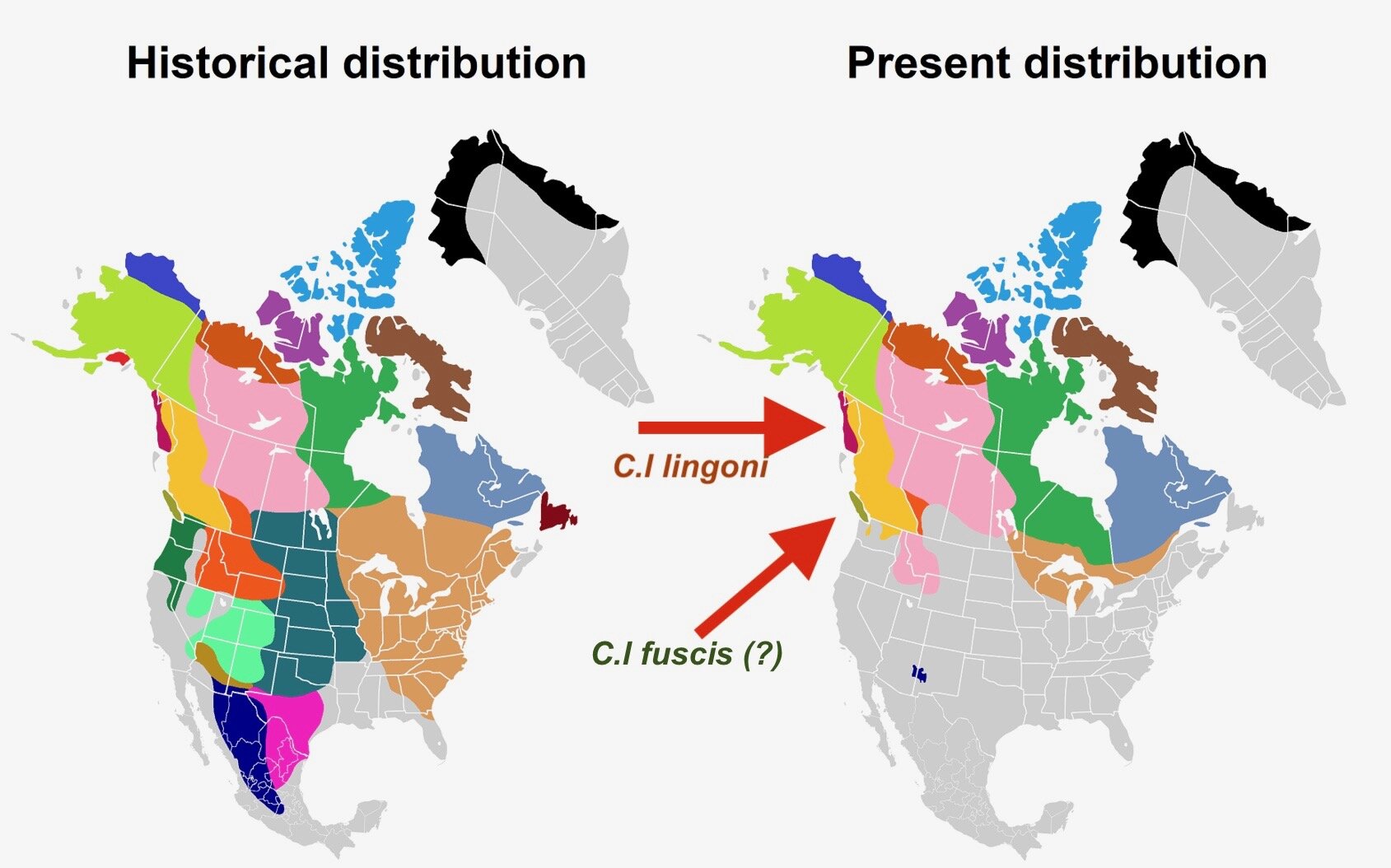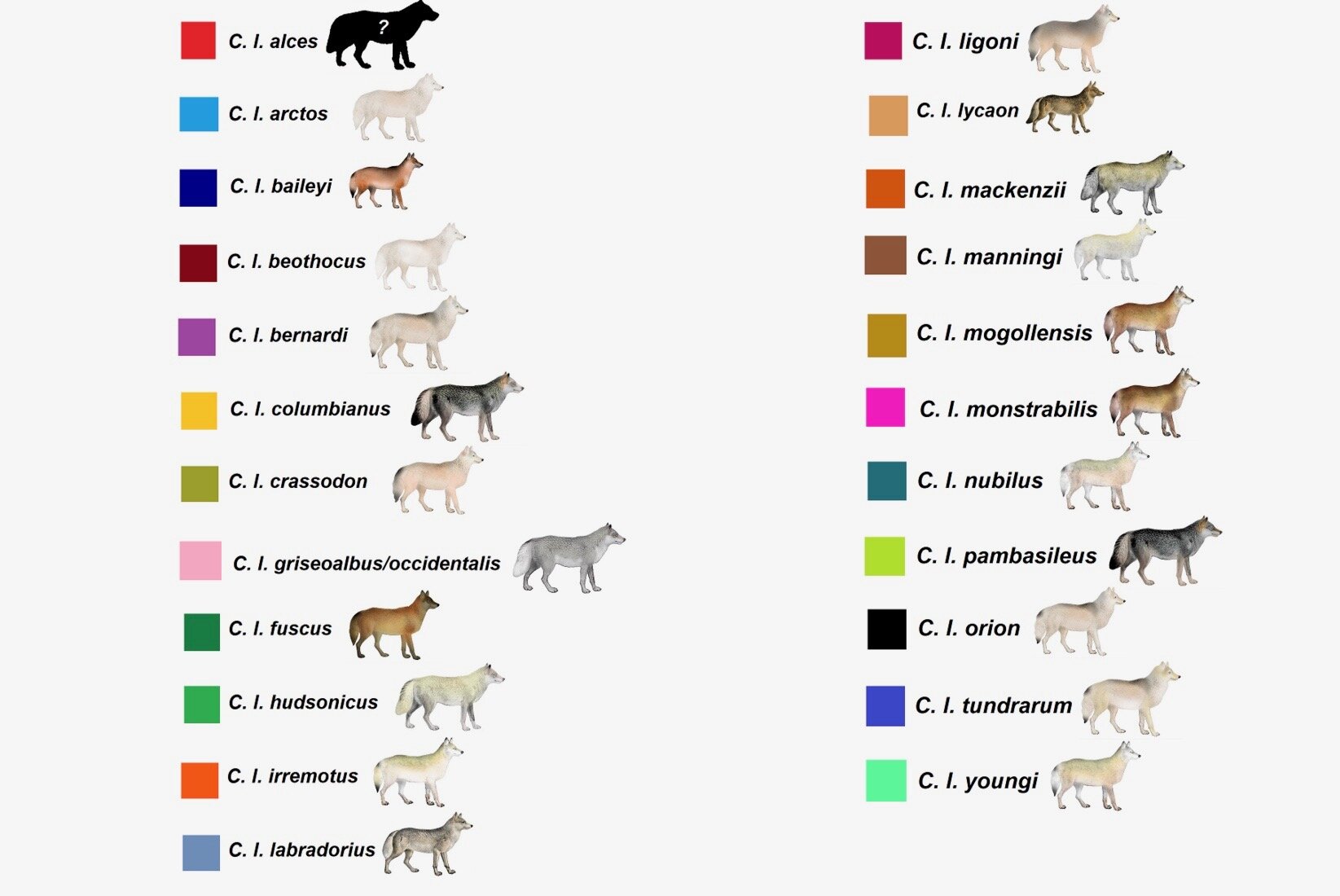Sea Wolf! On A Secret Stretch of the Pacific Coast Lives the Elusive Fish-Eating Grey Wolf
In small areas on the coast of British Columbia, Canada and along off Alaska’s southeast coastline and Islands of the Alexander Archipelago, there is something fishy going on. Grey Wolves. Image: ©Jorn Vangoidtsenhoven
Wildlife photographer, Jorn Vangoidtsenhoven
By Jorn Vangoidtsenhoven
If you’ve ever assumed that wildlife obediently poses to have its picture taken, think again. As an avid wildlife photographer, I have had my fair share of memorable wildlife encounters.
When you're out on foot in the wilderness, with only your wits and perhaps a can of bear pepper spray to protect you, it's amazing how suddenly you can find yourself in a situation feeling completely vulnerable and exposed. One moment, you are hiking on a peaceful trail in the forest, and the next, you're face-to-face with an animal that can easily cause serious harm if it pleases to do so. A small pack of wolves gifted me with one of those unforgettable experiences.
The salmon in the “blue lagoon” at Fish Creek at Hyder, Alaska is a mecca for black bear and fishing wolves. Image: ©Jorn Vangoidtsenhoven
Out-Running a Four-Legged Predator is Not an Option
On his record run, the fasted man alive, Usain Bolt, reached a top speed of 27.8 miles (45km) per hour for a distance of 100 meters (328ft). That means that even the fastest human being on planet earth isn't capable of outrunning an animal like a moose, let alone a mountain lion, bear, or wolf. Not that you should ever even try to run from most wildlife as that triggers their predatory instincts to chase you.
Hence my feeling of fear when I suddenly found myself face-to-face with three adult coastal wolves, each about the size of the most massive dog you have ever seen, chomping away at freshly caught salmon barely a few yards away. Fish eating wolves?
Salmon-eating grey wolves are opportunistic, catching live fish, or dining on already spent salmon after the spawn, preferring the heads and leaving the bodies for smaller mammals and birds. Image: ©Jorn Vangoidtsenhoven
Finding Grey Wolves Beyond Yellowstone
✍︎Editor's Note: On October 29, 2019, all protection for the grey wolf under the Endangered Species Act was removed. The Center for Biological Diversity, Earth Justice, The Western Environmental Law Center, and others organizations are challenging the decision.
When you think about wolves in America, no doubt the first thing that comes to mind is the success of Yellowstone National Parks’ 1995 wolf reintroduction - a place where they had historically been prevalent. Before settlers arrived, wolves – like other animals such as the American bison, grizzly bear, and elk – lived all over the American continent. Shortly after, however, they were systematically wiped out from most of the Continental United States in an extermination campaign set up by the federal government that lasted into the 1960s.
Grey Wolves in Canada
The story was better for wolves in Canada, thanks to its larger areas more sparsely populated by humans. And although hunters are allowed to kill around 10% of the total wolf population of 60,000 individuals annually, wolves have survived in much of Canada through the present day. Today, researchers believe that wolves hold up to 90% of their Canadian historical range. That is the 2nd highest number of grey wolves in the wild after Russia.
So All Wolves Hunt Big Prey …. Right?
Certain behavior is assumed typical across grey wolf (Canus lupis) populations, for example, hunting and eating habits. Grey wolf, a carnivore, typically consumes up to 20 pounds (9.07kg) of meat in one meal. Their typical diet consists of large land animals like elk, bison, and moose and smaller land animals such as rabbits and beavers. But, the scientific community is taking a second look at what they know about grey wolves.
On Canada's west coast, a small wolf population has been found that survives mostly on seafood! Think salmon, clams, seals, fish eggs, and even fish carcasses. Being excellent swimmers, they are known to swim for miles between the mainland and the islands. These wolves are known as the coastal, sea, or fishing wolves.
Sea Wolf! The Fish-Eating Wolves of Coastal British Columbia
The coastal grey wolf subspecies are as at home in the water as on land. They have even been known to “island-hop” along the coast in open seas. Image: ©Jorn Vangoidtsenhoven
✔︎ Trip Tips
Where: Great Bear Rainforest
What: Largest unspoiled tract of temperate rainforest on earth.
When: June to Oct. Best: During salmon run, late Aug. to October
How: Seaplane, ferry or drive from Bella Coola
Notes: Home of spirit bears, too.
Western British Columbia – with its many beaches and small islands – and Southeastern Alaska are home to a small population of genetically distinct grey wolves, generally referred to as coastal wolves. Typically a little smaller than inland grey wolves, their grey fur contains red and brown accents rather than the black accents found on other grey wolves. However, the most significant difference to any observer is their diet: the wolves of coastal British Columbia evolved away from being carnivores (meat-eaters) to becoming seafood eaters. Some researchers even go as far as classifying them as 'marine mammals' or 'sea wolves.'
Unfortunately for us but fortunately for the coastal wolves, there are few roads into their habitat, making finding and photographing them incredibly hard. Dedicated tours that specialize in photographing and observing these unique wolves in their original environment frequently schedule a week in the area but call themselves lucky if they get one short wolf encounter!
Finding Fish- Eating Wolves in Hyder, Alaska
Wolves are less casual about being caught in the open than are certain other apex predators like bears or lions. Seeing a a wolf in the wild requires time, patience, and a good eye. Hyder, Alaska. Image: ©Jorn Vangoidtsenhoven, Vango Photos
For me, the best place to see them, and the only place where I have been lucky enough to photograph them in the wild is southeastern Alaska.
Hyder, a small Alaskan town on Canada's border, is famous for its annual salmon run and its Fish Creek Wildlife Observation Site. The site is a wooden platform built by the National Forest Service that overlooks the salmon-filled creek. It is perfect for observing the creek's regular visitors, including s grizzly and black bears. However, if you get really lucky, a coastal wolf may stroll out of the rain forest into the creek ...
Sea Wolf Country! Hyder, Alaska’s Fish Creek Wildlife Observation Site where I saw my first fishing wolf. Image: ©Jorn Vangoidtsenhoven, Vango Photos
My First Encounter With Wolves in the Rainforest
A few years ago, I spent a few days in Hyder to photograph grizzly bears in the creek. As the rain came down hard on a bone-chilling September morning and a handful of us hardcore wildlife photographers were getting soaked – it's a rainforest after all – I struck up a conversation with some of the other photographers.
It turns out they had heard about the 'fishing wolves' and were desperate to get a viewing.
✔︎ Trip Tips
Where: Hyder, Alaska
What: The Fish CreeK Wildlife Observation Site (Platform)
When: Mid-July though early Sept.
How: Car: Cassiar Highway #37 to 37A to neighboring Stewart, BC.
The other photographers had been in Hyder for several weeks already with no wolves in sight. Yet, as it turns out, I was their lucky charm. During my first morning on the wooden platform, three wolves walked into the creek right in front of us and caught several salmon! I was amazed and repeatedly ran into my camera's buffer limitation: I was so enchanted by these wolves that I pretty much kept my finger on the shutter release button non-stop. I was sold.
The following year, I returned to Hyder during the summer and fall months. I met a family from France who was spending several weeks in Hyder in the hopes of spotting one fishing wolf. After about two weeks of waiting, we all got very lucky when a wolf walked out into the creek. To make it even better: a grizzly bear wandered into the water upstream, both saw the other, and the wolf made a run for it around the bear!


✍︎Editor: The fish-eating grey wolves in the Hyder area (mainland) and those on the Alexander Archipelago islands may be a different subspecies of grey wolves than the more isolated fish-eating wolves (canis lupis nebulis) in coastal and southern British Columbia. Genetic research is currently on-going.
Wild Wolves Can be Wildly Valuable
This wolf looks like its having fun, but lucky viewers on the platform may have been having even more! Grey wolf salmon fishing at Hyder, Alaska Image: Jorn Vangoidtsenhoven
Yellowstone's wolf population is responsible for bringing $35M tourist dollars to the Yellowstone area annually. Compare that to an estimated loss of $500,000 in hunting license fees, and money not spent by hunters with local hotels, cafes, guides and outfitters because they cannot hunt elk already killed by wolves. Unfortunately, the voice of outfitters and hunters carries a lot more weight through their membership in hunting organizations and even elected official groups, like state-level Game & Fish boards.
Most people love wolves and wildlife in general. Then why do hunters, who only make up a few percent of the general population, get to decide their fate?
A survey by the U.S. Fish and Wildlife Service finds that only 5% of Americans hunt. The state of Montana sells wolf hunting and trapping licenses for $19 to residents and $50 to non-residents. How do these numbers compare to the $35M revenue annually? Honestly, they don't, so it is our duty as people who appreciate and respect wildlife to fight the good fight, whether we do it for economic or ethical reasons. After all, few – if anyone – kill a wolf to put food on the table.
LUNCH! The few grey wolves in coastal British Columbia and southeastern Alaska are proving to be subspecies of the inland “big-game” hunters. Image: ©Jorn Vangoidtsenhoven
In Canada, the story is surprisingly similar. Wolf hunting is still allowed in the western province of British Columbia. This small population of coastal fishing wolves is lumped in with the general wolf population. Even though these wolves are genetically different with distinct DNA, making them eligible for separate Endangered Species status has not been granted. Other than trophy hunting, these coastal wolves also face habitat loss mainly due to logging and decreased Pacific salmon stocks.
Meanwhile, Back At the Stream with Three Wolves and Me
When I approached the salmon-filled stream along the border of Alaska and British Columbia, I was not expecting to come face-to-face with such rare and shy creatures as coastal wolves. Looking back, a few headless salmon carcasses in the creek were a telltale sign that they were in the area as wolf packs seem to prefer salmon heads. Yet here I found myself, completely alone and on foot, in a staring contest with three coastal wolves that were well within striking distance.
Do I run? Do I talk to them? Do I try to climb in a tree?
None of the above.
As the wolves gently watched me, I stopped and observed them, watching them catch salmon for a few minutes. I realized how lucky I was that these majestic animals trusted me to be there with them, but I couldn't stop cursing myself for not having my camera handy!
FOLLOW US
MORE
Can the Queen of the Tetons Protect Her Heirs. A Story of Grizzly 399 by by Jorn Vangoidtsenhoven
What I Learned After The Grizzly Charged Me. by Jorn Vangoidtsenhoven
9 Great Books on Wolves - Revised
by Roberta Kravette











